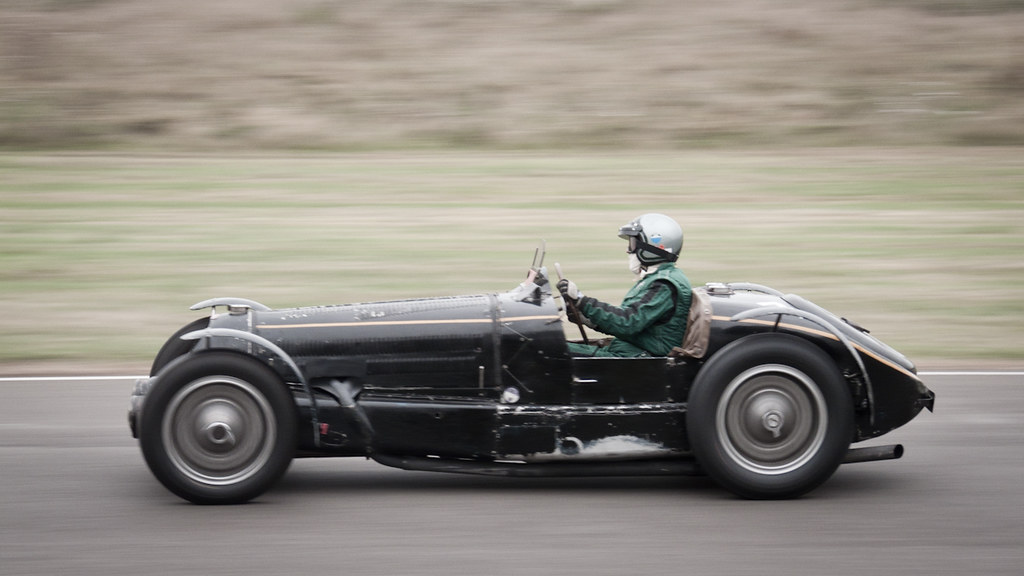1937 Bugatti Type 59 Grand Prix

The descriptions of the Classic Cars in the Directory were partly generated or supplemented with the help of artificial intelligence (AI). The content may occasionally not always be entirely accurate or factually correct despite careful checking.
The Bugatti Type 59 Grand Prix 1937 is one of the most remarkable and highly regarded racing cars of all time. This vehicle is known for its advanced engineering and technical innovations, which made it one of the most successful racing cars in history. Its design and engineering marked a turning point in automotive history, and the vehicle remains an icon to this day.
The Type 59 Grand Prix features a highly aerodynamic and streamlined body, which allowed it to achieve exceptional speeds. The sleek and elegant design was complemented by a powerful engine, which generated incredible horsepower and torque, enabling the vehicle to achieve top speeds of up to 190 km/h (118 mph). The engine was a supercharged 3.3-liter straight-eight that produced 250 horsepower, which was impressive for its time.
Furthermore, the Bugatti Type 59 Grand Prix was equipped with numerous unique technical features, such as hydraulic brakes, which were a rarity in racing cars back in the 1930s. The vehicle's suspension system was innovative and allowed for exceptional handling, as it used transverse leaf springs and a solid front axle.
The Type 59 Grand Prix's chassis was a masterpiece of engineering, constructed from high-quality nickel-chromium steel, which was both light and strong. The vehicle's driver and passenger seat were positioned in a mid-engined configuration, which provided excellent balance and stability, critical for successful racing.
The vehicle's transmission was a 4-speed manual gearbox, which was operated using a unique foot-controlled shift mechanism, a feature that was unique to the Type 59 Grand Prix. All these features combined to give the vehicle incredible performance, and it became a dominant force in racing events throughout the world.
Bugatti built only eight Type 59 Grand Prix vehicles, and they remain highly prized by collectors and racing enthusiasts. Today, they rank among the most valuable and coveted automobiles of all time, a true testament to the innovative design and technical brilliance of the Bugatti brand.
In conclusion, the Bugatti Type 59 Grand Prix 1937 is a technical marvel, showcasing the engineering expertise of its designers and builders. Its sleek and elegant design, advanced suspension, and transmission system, powerful engine, and innovative features make it one of the most important racing cars in history. Its rarity, combined with its exceptional performance, make it a highly sought-after vehicle, and a shining example of early automotive engineering prowess.
Milestones
- The Bugatti Type 59 Grand Prix was designed and produced by French carmaker Bugatti in 1934, with the first model debuting in 1935. - The Type 59 was powered by a 3.3-liter inline-eight engine that had a power output of 250 horsepower. - The car had a maximum speed of 240 km/h, making it one of the fastest race cars of its time. - The Type 59 had a successful racing career, with notable victories including the 1936 Monaco Grand Prix and the 1937 Belgian Grand Prix. - The Type 59 was most famously driven by French racing driver Jean-Pierre Wimille, who won multiple races in the car. - Only 8 Type 59s were ever produced, making it a rare and highly sought-after collector's item. - Today, the Bugatti Type 59 Grand Prix is considered one of the most iconic and influential race cars of all time, with its sleek lines and powerful engine inspiring future generations of sports cars.Technical
- Engine: 3.3L straight-eight - Power output: 250 hp - Transmission: 4-speed manual - Top speed: 160 mph - Suspension: Double wishbone front, De Dion rear - Brakes: Drum brakes all around - Wheelbase: 2,750 mm - Weight: 870 kg - Fuel tank capacity: 105 L - Body style: Open-wheel, single-seater - Designers: Jean Bugatti - Produced: 1933-1937 - Number produced: 8 (excluding prototypes) - Notable drivers: Robert Benoist, Jean-Pierre Wimille, Achille Varzi.